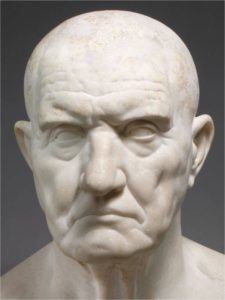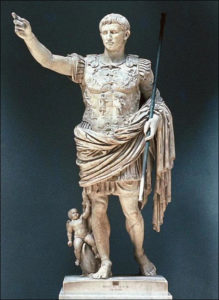In ancient Greece, humanism was a central focus in their art. Their focal point was creating statues that represent either human life or the human body. The Greeks did have a lot of their own gods portrayed in their statues, but they contrasted with Egyptians because when Egyptians would create their gods we saw a lot of unearthly features on them. With Greeks, they gave their gods human beauty and human bodies. It’s also noteworthy to point out that the stories of their gods contained many conflicts and woes, most of these problems resembled human problems, further deepening the similarities between them and humans physically, we would see reoccuring features of muscular tone bodies in men and a softness to the women. This type of time period in art was known as the Classical past. It is very distinguishable because of how many details were repeated. Essentially, this is the time period where the gap between the divine and humans start to close.

We come into a new time in ancient Greek art when Hellenism begins. Unlike classical art, Hellenism prioritized different things. There was a bigger scope and they no longer focused on the youthful male or the beautiful soft woman. Instead, we see a focus on everyday life, ethnicity, and genders. For example, we have the “Seated Boxer” that was made in 100-50 BCE and is made out of bronze and this is a perfect example of hellenistic art. He is an older man and wasn’t as beautiful as a Classical past statue would be. We see a sense of humility. We see wounds carved into his face, and we see this statue stray away from the heroism we saw in the classical age. What made him apart of the Hellenism era was his imperfectness.

We see another different era start when the Romans invade Greece. This is known as Verism. The republican Romans introduced this, and we started to see a more accurate representation of humans. Their features were very distinguishable, and this meant that along with straying away from legendary and heroic art we were also straying away from beauty. These types of statues were no longer flattering and were just ten times more realistic. There is also a shift in poses that we can see a huge difference in if you look at classical art and verism. We saw a lot on contrapposto in classical art and it looked very fragile and soft but going into Republican Rome we see the body lanaguage of speechmaking become popular. The figure would look as if he would be walking forwards with his arm in the air. These three eras have such sharp dichotomies, and it’s very impressive.


Out of all three of these eras I feel as though classical past was the most beautiful. Of course, it was most the animated of the three but I think the details and the beauty is just unmatched. These eras are also extremely impressive. Although this is ancient times, it is incredible how advanced the greeks and Romans were. As time passed, so did their values and those changing values were reflected in their art. I look at as their own form of record keeping. Looking at their art is interesting but learning about it all is extremely impressive.


